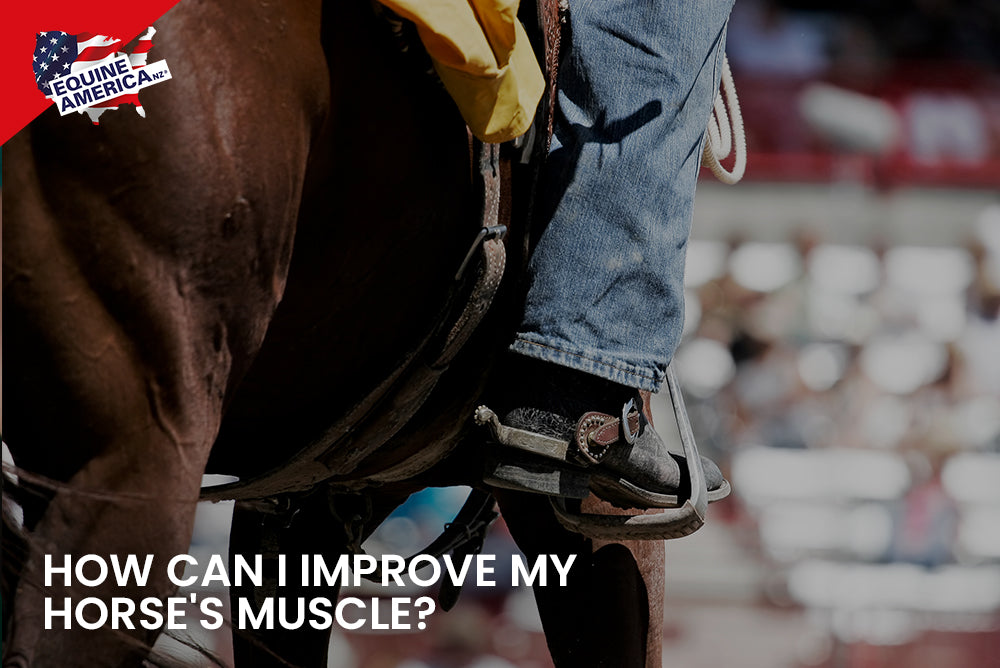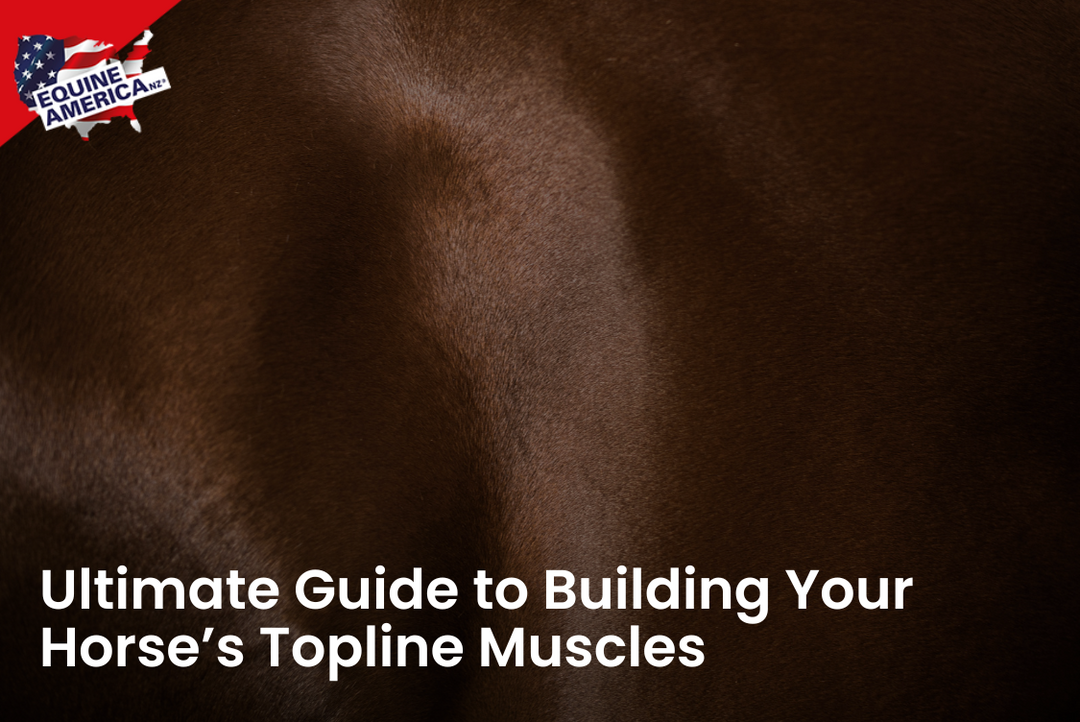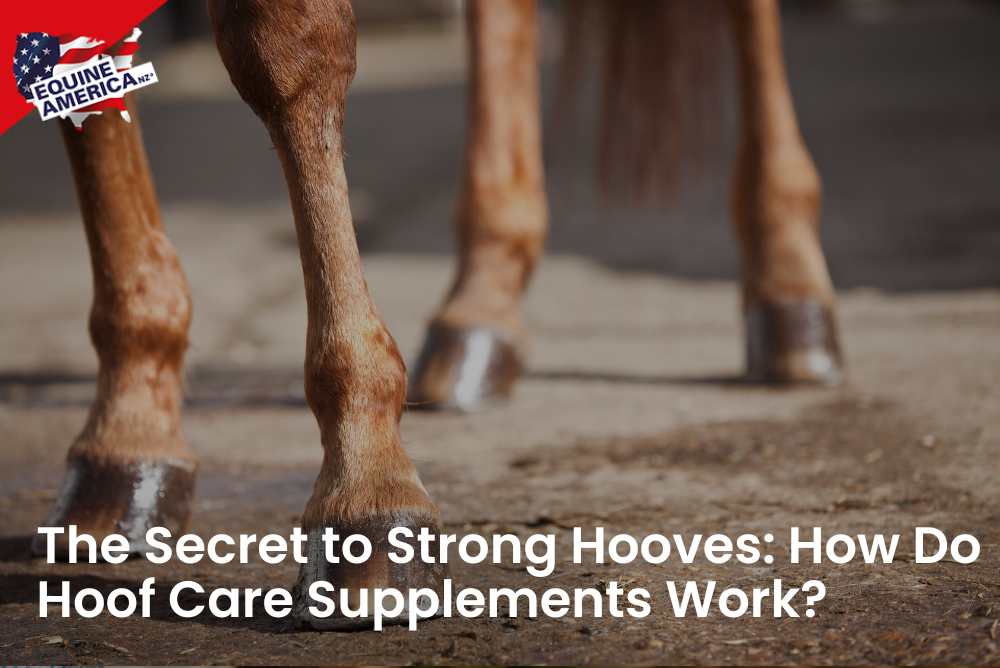
Building your horse's muscles is akin to training any elite athlete. It requires careful planning, a deep understanding of equine anatomy, and a multifaceted approach. Horses possess both slow-twitch muscle fibres, which excel in endurance activities, and fast-twitch fibres, which are essential for speed and power.
Understanding the distinction between these fibres helps you customise a training regimen that meets your horse's specific requirements. Moreover, muscles are impacted by various physiological factors, including diet, exercise, and recovery, all of which must be in balance for effective growth.
Assessing Your Horse's Current Muscle Condition
Before you can help your horse develop its muscles, it's crucial to assess its current condition. Observing the horse's movement reveals crucial insights into its muscle strength and flexibility. Are there areas of muscular imbalance?
Does the horse seem hesitant or show signs of discomfort during exercise? Palpate key muscle groups like the back, hindquarters, and shoulders to feel for asymmetry or areas of unusual softness or tightness.
Take note of the horse's topline development, as a well-rounded topline indicates strong core and back muscles. Document these observations to establish a baseline, providing a clear starting point for future progress comparisons.
Importance of Proper Nutrition
Nutrition is a cornerstone of any muscle-building program. Horses require balanced diets that include quality protein, essential amino acids, carbohydrates, and fats to support their muscle development.
Amino acids like lysine and methionine are crucial because they form the building blocks of protein synthesis, enabling muscle repair and growth. Carbohydrates and fats provide the energy necessary to sustain workouts, while vitamins and minerals like vitamin E, selenium, and magnesium play essential roles in muscle function.
Tailor your horse's diet to its specific workload, emphasising high-quality forage, balanced grains, and, if necessary, targeted horse supplements. Consult with an equine nutritionist to ensure the dietary plan meets the horse's unique metabolic demands.
Tailoring Workouts to Your Horse's Discipline
The exercise requirements for developing a horse's muscles depend on the discipline. Dressage demands hindquarter strength for collection, while show jumping requires explosive power.
Western pleasure horses benefit from consistent muscle tone for maintaining smooth gaits. By understanding these demands, you can design a workout regimen that targets the necessary muscle groups.
For example, pole exercises are excellent for improving coordination and rhythm, while lateral work like leg yields and shoulder-ins enhances hind-end engagement. For eventing or jumping horses, conditioning exercises that simulate competition conditions help build explosive muscle power. In contrast, trail riding with varied terrains promotes overall muscle tone and agility.
Incorporating Strength-Building Exercises
Incorporating specific strength-building exercises into your horse’s training program is essential for improving muscle mass. Hill work, trotting or cantering uphill, encourages the engagement of hindquarters and core muscles.
Cavaletti exercises are perfect for rhythm and coordination, while backing up on the ground or under saddle engages core stability. Lunging in long lines with or without side reins can also help develop the topline.
Be sure to introduce new exercises gradually, observing how your horse responds before increasing intensity. This will ensure the horse gains confidence in each movement and develops strength at a sustainable pace.
Implementing Stretching and Warm-Up Routines
Stretching and warm-up routines are indispensable in preventing injuries and preparing the muscles for exercise. Begin with a thorough warm-up, incorporating a mix of walk, trot, and canter work to increase circulation and flexibility.
Once the horse is limbered up, introduce gentle stretches that target specific muscle groups. Carrot stretches encourage neck and back flexibility, while tail pulls stretch the hindquarters.
Incorporate dynamic stretching, such as leg swings, to stimulate joint mobility and improve range of motion. After exercise, use static stretches to gradually elongate and cool down the muscles.
Importance of Rest and Recovery
Rest is as crucial as the workouts themselves when it comes to muscle development. Muscles grow and strengthen during rest periods, not during training. Exercise causes microtears in the muscle fibres, which, with proper nutrition and rest, heal stronger and more resilient.
Ensure your horse receives adequate rest days between intense training sessions. On rest days, encourage passive recovery with hand-walking or gentle grazing to maintain movement and prevent stiffness.
Role of Supplements in Muscle Growth
While a balanced diet usually provides sufficient nutrients for most horses, some may benefit from specific supplements targeting muscle development. Amino acids like lysine and branched-chain amino acids (BCAAs) support muscle synthesis.
Creatine, widely used in human athletics, may help improve explosive strength for activities that require short bursts of power. Vitamin E and selenium can aid muscle function, while omega-3 fatty acids reduce inflammation and promote overall health. Always consult with a veterinarian or equine nutritionist before adding supplements to ensure they meet your horse’s unique needs.
Preventing Muscle Injuries and Strains
Injury prevention is vital during any muscle-building program. Overexertion, uneven terrain, and inadequate warm-ups can cause strains and tears, potentially derailing progress. Gradually increase training intensity and duration based on your horse’s fitness level, and avoid abrupt workload increases.
Ensure that the footing is safe and consistent, and regularly consult your veterinarian for early detection of potential issues. Appropriate farrier care, including balanced trims and properly fitting shoes, can also prevent muscle injuries stemming from poor hoof alignment.
Monitoring Progress and Adjusting Plans
Regularly monitoring your horse’s muscle development ensures the training plan remains effective. Observe your horse’s gait, palpate key muscle groups for strength and symmetry, and track weight changes.
Photographic documentation allows you to compare muscle condition over time. Based on progress, adjust training intensity or nutritional input to maintain steady, sustainable growth.
Collaborating with Equine Health Professionals
Collaboration with equine health professionals, such as veterinarians, farriers, trainers, and nutritionists, is vital for comprehensive muscle development. Veterinarians can identify and address potential health issues that may interfere with training, while farriers ensure proper hoof alignment.
Trainers can design workouts that match your horse's discipline, and nutritionists can tailor a diet that meets your horse's unique metabolic requirements.
Final Thoughts: A Balanced Approach to Muscle Development
Improving your horse’s muscle requires a multifaceted approach encompassing proper nutrition, targeted exercises, and sufficient recovery. By prioritising these pillars and embracing consistent monitoring and collaboration with health professionals, you can help your horse achieve optimal muscle development.
Tailoring your approach to your horse’s discipline ensures that it remains strong, healthy, and ready to excel in its chosen sport. The investment in thoughtful, balanced muscle building will pay off in your horse’s performance and long-term vitality.
If you’re looking for high-quality equine supplements for your horse, consider exploring the range offered by us here at Equine America NZ. Our extensive selection of products along with performance-enhancing supplements provide you with suitable options to support your horse’s overall health and performance.
Please give us a call at Equine America NZ today at 0800 440 888 to learn more or leave an enquiry.




